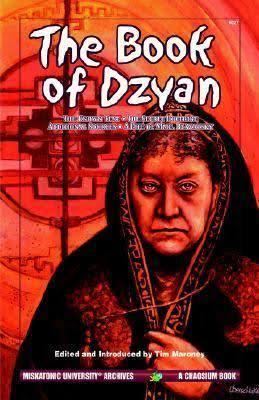Originally published 1 December 1999 | Editor Tim Maroney | |
 | ||
Similar The Secret Doctrine, Isis Unveiled, Las Estancias de Dzyan, The Voice of the Silence, The Key to Theosophy | ||
The Book of Dzyan (comprising the Stanzas of Dzyan) is a reputedly ancient text of Tibetan origin. The Stanzas formed the basis for The Secret Doctrine (1888), one of the foundational works of the theosophical movement, by Helena Petrovna Blavatsky.
Contents
Madame Blavatsky's claims regarding the Book of Dzyan
Madame Blavatsky claimed to have seen a manuscript of the Book of Dzyan while studying esoteric lore in Tibet. She claimed this and other ancient manuscripts were safeguarded from profane eyes by the initiates of an Occult Brotherhood. The work had originally, according to Blavatsky, been written in the sacred language of Senzar. She wrote
This first installment of the esoteric doctrines is based upon Stanzas, which are the records of a people unknown to ethnology; it is claimed that they are written in a tongue absent from the nomenclature of languages and dialects with which philology is acquainted; they are said to emanate from a source (Occultism) repudiated by science; and, finally, they are offered through an agency, incessantly discredited before the world by all those who hate unwelcome truths, or have some special hobby of their own to defend. Therefore, the rejection of these teachings may be expected, and must be accepted beforehand. No one styling himself a "scholar," in whatever department of exact science, will be permitted to regard these teachings seriously.Max Müller and others have been skeptical. Max Müller is reported to have said that in this matter she was either a remarkable forger or that she has made the most valuable gift to archeological research in the Orient.
The Book of Dzyan and the Buddhist Tantras
In other references Blavatsky claimed the Book of Dzyan belonged to a group of Tibetan esoteric writings known as the Books of Kiu-Te. Blavatsky wrote before a standard transcription of Tibetan into the Latin alphabet had been agreed upon; it took David Reigle some time to establish that she was referring to what modern scholars write as rGyud-sde, parts of a voluminous Buddhist corpus commonly referred to as the Tantras. Other researchers have suggested a source in Chinese Taoism or Jewish kabbala.
The Stanzas of Dzyan in the works of other authors
Supposed verses from the same Stanzas of Dzyan were later published by Alice Bailey in A Treatise on Cosmic Fire in 1925. Bailey claimed these verses had been dictated to her telepathically by the Tibetan Master Djwal Kul.
Ufologist Desmond Leslie drew heavily on the Stanzas of Dzyan in his writing, and theorized that they had originally been produced on the lost continent of Atlantis.
Swiss author Erich von Däniken claimed to have explored some of the book's content and its alleged history, reporting unsourced rumours that the first version of the book predates Earth, and that chosen people who simply touch the book will receive visions of what it describes.
References to the Stanzas exist in the fictional fantasy works of H. P. Lovecraft, for example in his short story "The Haunter of the Dark", and have been expanded upon by other writers who have worked within the Cthulhu Mythos.
